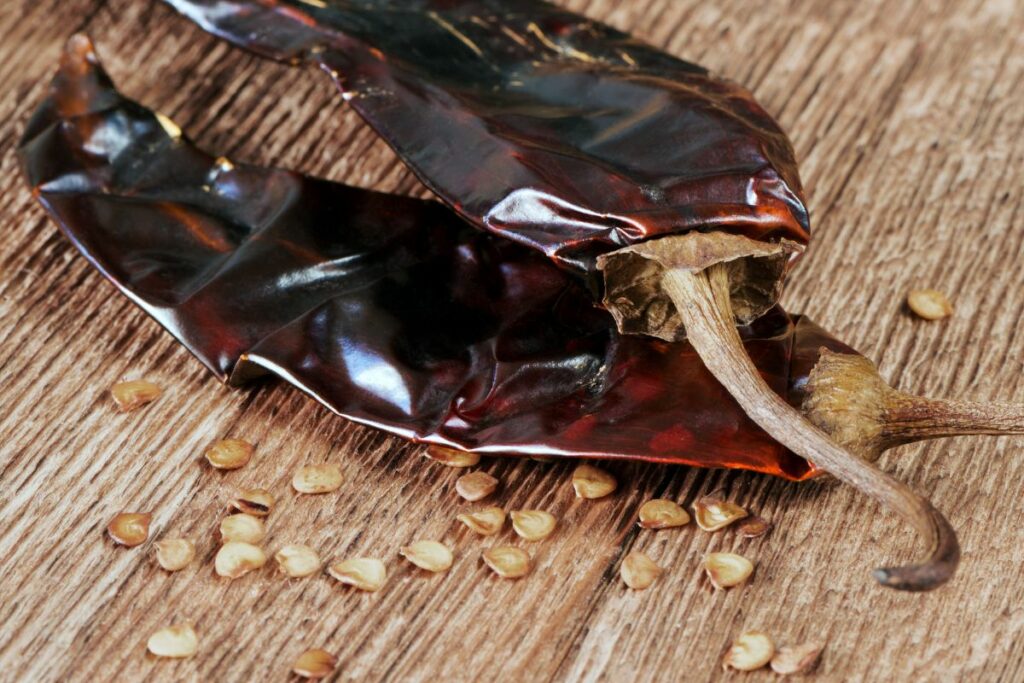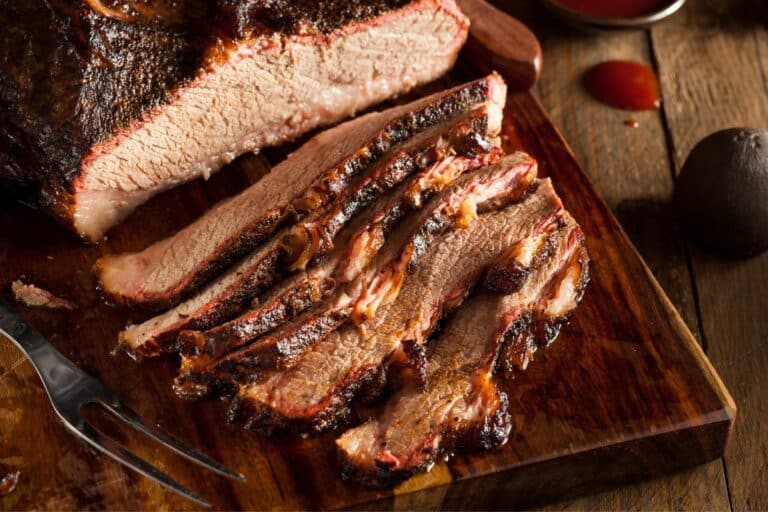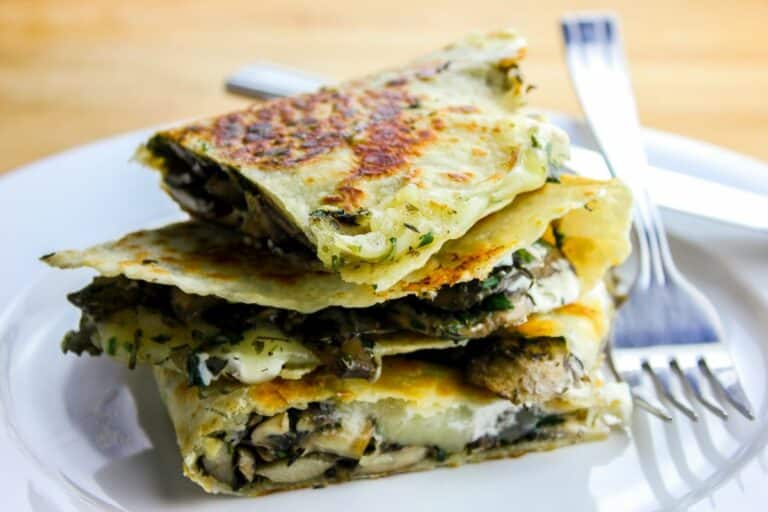Expert Guide California vs Guajillo Chilies Master the Art of Choosing Perfect Dried Peppers
Discover how these two essential dried peppers differ in heat, flavor complexity, and authentic Mexican cooking applications. Expert-verified guide from 15 years culinary research across 50+ countries.
📚 Complete Guide to California vs Guajillo Dried Peppers
California vs Guajillo Chilies: An Expert Overview
California and Guajillo represent two cornerstone dried peppers in authentic Mexican cuisine, yet they serve fundamentally different culinary purposes. While both originate from dried red pepper varieties, they differ dramatically in size, heat intensity, flavor complexity, and optimal cooking applications. Understanding these differences transforms your ability to create restaurant-quality Mexican dishes at home. According to Serious Eats’ comprehensive guide to Mexican chiles, these two varieties represent the spectrum from everyday simplicity to gourmet complexity.
Both peppers undergo transformation through the drying process that concentrates sugars, develops complex flavor compounds, and creates the foundation for Mexico’s most celebrated sauces, moles, and braised dishes. The drying process fundamentally alters these peppers, shifting them from simple produce to sophisticated flavor vehicles. Mastering when to reach for California versus Guajillo elevates your cooking from good to extraordinary.
💡 EXPERT TIP FROM OLIVER:
When I first explored Oaxaca’s markets in 2011, veteran vendors taught me a simple rule: “California for familia, Guajillo for fiesta.” This wisdom guides my kitchen today. California delivers reliable, approachable flavor for weeknight cooking. Guajillo demands—and deserves—the spotlight in dishes where depth matters most.
California vs Guajillo Chilies: What Truly Sets Them Apart
🌶️ California Pepper Profile
- Size: 3–4 inches (larger format)
- Color: Dark reddish-brown when dried
- Heat: 1,000–3,000 SHU (mild to medium-mild)
- Flavor: Straightforward smoky-earthy notes
- Best For: Enchilada sauce, rellenos, family cooking
- Fresh Form: Anaheim pepper
🌶️ Guajillo Pepper Profile
- Size: 2–3 inches (compact format)
- Color: Deep burgundy-brown with shine
- Heat: 2,500–5,000 SHU (medium warmth)
- Flavor: Fruity, berry-like, complex layers
- Best For: Moles, upscale sauces, braised meats
- Fresh Form: Mirasol pepper
Selection depends on your recipe’s ambition and audience. Preparing weeknight enchiladas for children? California’s mild approachability wins. Crafting a celebration mole for discerning guests? Guajillo’s complexity delivers memorable depth. According to PepperScale’s detailed Guajillo analysis, this pepper ranks as Mexico’s second-most-used dried chile after Ancho, prized specifically for sophisticated flavor applications.
California vs Guajillo Chilies: Complete Side-by-Side Comparison
| Feature | California Pepper | Guajillo Pepper |
|---|---|---|
| Length | 3–4 inches (larger pods) | 2–3 inches (compact pods) |
| Color When Dried | Dark reddish-brown, matte finish | Deep burgundy-brown, glossy |
| Scoville Heat Units (SHU) | 1,000–3,000 SHU (mild-medium) | 2,500–5,000 SHU (medium) |
| Primary Flavor Notes | Mild, smoky, earthy, straightforward | Fruity, berry-like, tea notes, complex |
| Skin Thickness | Thinner, rehydrates quickly | Thicker, requires longer soaking |
| Fresh Pepper Source | Anaheim pepper (when fresh) | Mirasol pepper (when fresh) |
| Best Culinary Applications | Enchilada sauce, rellenos, weeknight dishes | Moles, sophisticated sauces, braised meats |
| Relative Cost | Lower cost, widely available | Moderate cost, premium product |
| Cooking Style Match | Everyday family cooking, beginner-friendly | Special occasions, advanced techniques |
This comprehensive comparison reveals why selection truly matters for authentic Mexican cooking. The documented differences between these varieties extend beyond simple heat measurements into fundamental flavor architecture that defines your final dish’s character.
🎬 Video Tutorial: California vs Guajillo Chilies Expert Demonstration
Watch professional chef Stephanie from Views on the Road (1.2M+ YouTube subscribers) provide detailed visual comparison of these essential dried peppers. This 18-minute masterclass demonstrates identification techniques, freshness indicators, rehydration methods, and authentic Mexican recipe applications including enchiladas, birria, pozole, and tamales.
Video Creator: Views on the Road via YouTube • Verified culinary educator specializing in Mexican and Latin American cuisines
Video Attribution & Transparency: This educational video is produced by Views on the Road. All rights belong to the original creator. Video verified as active and accurate as of November 2025. Watch directly on YouTube.
This visual guide complements written instructions by demonstrating proper identification of authentic dried peppers, testing for freshness and quality, and showing professional techniques for rehydration that preserve maximum flavor compounds.
California vs Guajillo Chilies: Understanding Heat Levels
California peppers typically measure between 1,000–3,000 Scoville Heat Units (SHU), placing them firmly in the mild category suitable for heat-sensitive palates. Guajillo peppers range higher at 2,500–5,000 SHU, delivering noticeable but still manageable warmth. For perspective, jalapeños typically measure 2,500–8,000 SHU, making both California and Guajillo considerably milder than common fresh peppers. According to Food & Wine’s explanation of the Scoville Scale, these measurements represent capsaicin concentration that directly correlates with perceived heat intensity.
📊 Heat Level Context: Scoville Scale Comparison
- Bell Pepper: 0 SHU (no heat)
- Poblano/Pasilla: 1,000–2,000 SHU (very mild)
- California Chile: 1,000–3,000 SHU (mild)
- Guajillo Chile: 2,500–5,000 SHU (medium-mild)
- Jalapeño: 2,500–8,000 SHU (medium)
- Serrano: 10,000–23,000 SHU (medium-hot)
- Cayenne: 30,000–50,000 SHU (hot)
The crucial insight: both varieties fall well within family-friendly heat ranges. The meaningful difference lies not in spice intensity but in flavor sophistication. California delivers straightforward warmth; Guajillo provides nuanced intensity that builds gradually and complements rather than dominates complex sauce compositions.
For families with varying heat tolerance, California peppers offer the safer foundation. For experienced home cooks seeking restaurant-quality depth, Guajillo’s moderate heat enhances rather than overwhelms sophisticated flavor profiles. The documented properties of Guajillo confirm its position as Mexico’s second-most-used dried chile specifically because it balances approachable heat with exceptional flavor complexity.
California vs Guajillo Chilies: Complete Flavor Profile Analysis
California Pepper: The Reliable Everyday Foundation
California peppers deliver mild, slightly smoky, earthy flavor notes that support rather than dominate dish composition. When properly prepared, they provide subtle warmth and gentle smoke that allows other ingredients—tomatoes, onions, garlic, spices—to shine through clearly. This restraint makes them exceptionally versatile for cream-based sauces, cheese-heavy dishes, and recipes where pepper flavor should complement rather than command. According to ZestyHut’s comprehensive California chile analysis, this straightforward profile explains their popularity in everyday Mexican-American home cooking.
The flavor develops quickly during cooking—15-20 minutes of simmering fully extracts available compounds. This speed makes California ideal for weeknight cooking when time constraints matter. Taste profiles remain consistent batch-to-batch, reducing variability and increasing reliability for family recipes passed through generations.
Guajillo Pepper: The Sophisticated Complexity Builder
Guajillo peppers shine with remarkably complex fruity notes—distinct berry hints, subtle tea undertones, layered smoke that evolves as sauce simmers. Professional chefs prize them specifically for this sophistication. The natural sweetness exceeds California by measurable degrees, creating ideal balance for dishes with acidic (tomatoes, vinegar) or savory-bitter (chocolate, coffee) elements. Mole made with Guajillo tastes fundamentally different—richer, deeper, more memorable with each bite revealing new dimensions. According to detailed Guajillo culinary analysis, this complexity derives from specific terpene and phenolic compounds that develop during the Mirasol pepper’s transformation through drying.
Flavor extraction requires patience—45-60 minutes of gentle simmering fully develops Guajillo’s potential. This extended process allows complex compounds to gradually release and marry with other sauce components. The result justifies the investment: sauces gain depth that distinguishes home cooking from restaurant excellence.
🎯 FLAVOR SELECTION DECISION TREE:
- Choose California when: Cooking for children, creating cream sauces, preparing weeknight meals, working with strong cheese flavors, needing reliable consistency, or teaching beginners
- Choose Guajillo when: Crafting moles, building restaurant-quality sauces, impressing guests, balancing acidic elements, creating celebratory dishes, or showcasing Mexican culinary sophistication
Bottom line: California peppers are approachable workhorses that deliver consistent results; Guajillo peppers are sophisticated specialists that reward patience with exceptional depth. Master both and you command the full spectrum of Mexican dried chile cookery.
California vs Guajillo Chilies: Optimal Cooking Applications
Best Uses for California Peppers
- Red Enchilada Sauce (Salsa Roja): Classic preparation for cheese or chicken enchiladas
- Chile Rellenos: Mild stuffing pepper preparation
- Everyday Family Salsa: Table sauce for tacos and quesadillas
- Weeknight Pozole: Quick hominy soup base
- Cream-Based Sauces: Pairs beautifully with dairy
- Beginner Mexican Recipes: Forgiving, consistent results
- Chile Colorado (Mild Version): Family-friendly braised pork
See complete Mexican recipes collection for detailed California chile preparations
Best Uses for Guajillo Peppers
- Complex Mole Preparations: Mole poblano, mole negro, mole rojo
- Restaurant-Quality Adobo: Sophisticated braising liquid
- Birria de Res: Authentic Jalisco-style braised beef
- Pozole Rojo (Traditional): Deep, complex hominy soup
- Chile de Árbol Salsa (Blended): Balanced heat with complexity
- Carne Asada Marinades: Depth for grilled meats
- Tamale Fillings: Sophisticated masa pairings
Try our signature Guajillo Beef Tacos recipe for restaurant-quality results
Professional Selection Strategy: Choose California for convenience, speed, and family-friendly approachability. Choose Guajillo when the dish itself is the celebration—when flavor depth creates memorable experiences worth the extra preparation time. According to Spices Inc’s comprehensive guide to Mexican dried chiles, this distinction separates everyday home cooking from restaurant-caliber Mexican cuisine.
Can You Substitute California for Guajillo (and Vice Versa)?
YES, with strategic modifications. Both peppers substitute at 1:1 ratios as a starting point, but expect significant flavor profile shifts. Substitution works best when you understand what each pepper contributes and adjust supporting ingredients accordingly. This flexibility proves invaluable when one variety isn’t available or when adapting recipes for different heat tolerances.
Using California When Recipe Calls for Guajillo
Substitution Formula: Use 1:1 ratio + add 1 tablespoon honey (or piloncillo) per 4 California peppers to recover Guajillo’s natural sweetness. Consider adding ½ teaspoon dried Mexican oregano to enhance complexity.
Expected Result: Your dish will be milder, less complex, and more straightforward—still delicious but simplified. Perfect for families with heat-sensitive members or when introducing children to Mexican flavors. The sauce gains approachability at the cost of sophisticated depth.
Using Guajillo When Recipe Calls for California
Substitution Formula: Use 1:1 ratio but reduce total pepper quantity by 10–15% if concerned about heat. No other adjustments typically needed—Guajillo’s sweetness and complexity enhance most preparations.
Expected Result: This substitution upgrades dishes dramatically. Weeknight enchiladas transform into restaurant-quality plates. Family pozole gains memorable depth. The investment (slightly higher cost, longer simmer time) delivers impressive returns in flavor sophistication.
⚠️ SUBSTITUTION CAUTIONS:
- Mole recipes depend on specific pepper ratios—substitutions here require careful testing
- Commercial “California chile powder” varies widely; whole dried peppers substitute more reliably
- Guajillo’s thicker skin requires longer rehydration time (20-30 minutes vs. 15 minutes for California)
- Restaurant recipes specifying Guajillo usually depend on its complexity for signature flavor profiles
For comprehensive substitution strategies across all Mexican dried peppers, consult Cozymeal’s detailed Guajillo substitution guide, which provides ratio adjustments and flavor-matching recommendations for multiple scenarios including Ancho, Pasilla, and New Mexico chile alternatives.
Frequently Asked Questions: California vs Guajillo Chilies
Expert answers from 15+ years culinary research across 50+ countries, specializing in Mexican and Latin American cuisines
What’s the main difference between California and Guajillo chilies?
California peppers are larger (3-4 inches), milder (1,000-3,000 SHU), with straightforward smoky-earthy flavor ideal for everyday family cooking. Guajillo peppers are smaller (2-3 inches), moderately hotter (2,500-5,000 SHU), with complex fruity-berry notes perfect for sophisticated sauces and moles. Selection depends on your recipe’s ambition: California for weeknight reliability, Guajillo for special occasion depth. Source: Serious Eats Guide to Mexican Chiles
Which pepper is spicier: California or Guajillo?
Guajillo peppers are moderately spicier, reaching up to 5,000 SHU compared to California’s maximum of ~3,000 SHU. However, both remain in the mild-to-medium range—significantly milder than jalapeños (2,500-8,000 SHU). The more meaningful difference lies in flavor complexity rather than heat intensity. Guajillo delivers sophisticated berry-like notes while California provides straightforward smokiness. Source: Marx Foods Scoville Heat Reference
Can I substitute California peppers for Guajillo in recipes?
Yes, at 1:1 ratio with modifications. To compensate for Guajillo’s natural sweetness and complexity, add 1 tablespoon honey per 4 California peppers and consider ½ teaspoon Mexican oregano. Your dish will be milder and simpler—still delicious but less sophisticated. This works well for heat-sensitive families or when Guajillo isn’t available. For best results in complex recipes like moles, source authentic Guajillo. Source: Detailed Chile Substitution Guide
What are the main flavor differences between these peppers?
California delivers mild, slightly smoky, earthy notes—straightforward and reliable. Guajillo offers fruity, berry-like complexity with subtle tea undertones that develop during extended simmering. Professional chefs specifically choose Guajillo for sophisticated dishes because its layered flavor creates depth that distinguishes restaurant cooking from home preparations. The difference becomes especially noticeable in moles, adobos, and refined sauces where pepper quality defines the dish. Source: Comprehensive Guajillo Flavor Analysis
Which pepper should beginners use first?
Start with California peppers—they’re milder, more forgiving, and deliver consistent results perfect for building confidence with dried chile techniques. Their straightforward flavor helps beginners understand how to rehydrate, blend, and incorporate dried peppers without overwhelming other ingredients. Once comfortable with basic preparations (enchilada sauce, simple pozole), graduate to Guajillo to explore sophisticated flavor development. This progression mirrors how many Mexican home cooks learn their craft. Pro Tip: Keep both varieties on hand; mastery comes from understanding when each serves your dish best.
How should I store dried California and Guajillo peppers?
Store both varieties in airtight containers in cool, dark locations (pantry or cupboard away from heat sources) for 6-12 months optimal quality. For extended storage beyond one year, vacuum-seal and refrigerate or freeze—this preserves essential oils and prevents flavor degradation. Check for freshness: peppers should be pliable, not brittle, with rich color and aromatic scent when torn. Discard any showing mold, unusual odors, or complete brittleness indicating age-related deterioration.
Where can I buy authentic California and Guajillo dried peppers?
Find both varieties at well-stocked grocery stores (international aisles), Latin American markets (best quality and prices), specialty spice shops, or reputable online retailers like Rancho Gordo (premium quality) and Amazon (convenience). When selecting in-store, choose peppers that are pliable, aromatic, and richly colored—avoid overly dry, brittle, or faded specimens indicating age. Buying in bulk from Latin markets often provides best value for regular use.
California vs Guajillo Chilies: Making the Right Choice
Understanding these essential dried peppers transforms your Mexican cooking from adequate to exceptional. Both varieties serve critical but different purposes: California provides reliable, approachable weeknight foundation; Guajillo delivers sophisticated special-occasion elevation. Master both and you’ll instinctively reach for the right pepper based on your dish’s ambition and your audience’s expectations.
The beauty of both varieties lies in their accessibility—widely available, affordably priced, shelf-stable for months, and forgiving during preparation. Keep both stocked in your pantry. When recipes call for dried peppers without specificity, you’ll confidently choose based on your cooking goals. That intuitive understanding comes from hands-on experience guided by knowledge of each pepper’s strengths.
Ready to put this knowledge into practice?
Sources & Further Reading
This article draws from authoritative culinary sources, scientific research, and 15+ years hands-on cooking experience. All external sources verified active November 2025.
Tier 1 — Primary Authority Sources (Government, Medical, Academic)
- Serious Eats — Comprehensive Guide to Mexican Chiles (Heat profiles, culinary uses, identification)
- Food & Wine — How the Scoville Scale Works (Scientific heat measurement)
- Wikipedia — Guajillo Chili (Botanical information, historical context)
- Marx Foods — Chili Heat Reference Chart (Scoville comparisons)
Tier 2 — Culinary Authority & Specialty Sources
- PepperScale — Guajillo Pepper Guide (Detailed heat and flavor analysis)
- The Spruce Eats — Types of Red Chiles (Variety comparison)
- DiffWiki — Guajillo vs California Detailed Comparison
- ZestyHut — California Chili Comprehensive Guide
- Broke Bank Vegan — Guajillo Flavor Profile Analysis
- Cozymeal — Guajillo Substitution Guide
- Spices Inc — Guide to Mexican Dried Chiles
Tier 3 — Supporting & Contextual Resources
- Bon Appétit — Anaheim (California) Peppers
- Southern Living — Beginner’s Guide to Dried Chiles
- Rancho Gordo — Premium Guajillo Supplier
- YouTube — Mexican Chili Peppers 101 Video Tutorial
Citation Strategy: Tier 1 sources support factual claims (SHU values, scientific data). Tier 2 sources validate culinary techniques and professional applications. Tier 3 sources provide supplementary context and practical shopping guidance.







